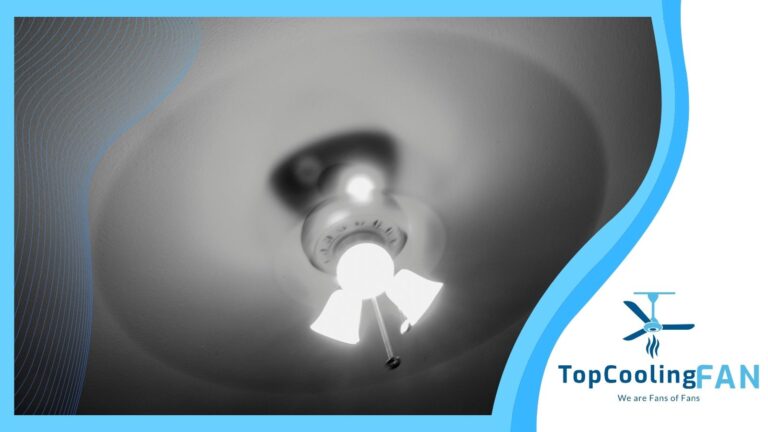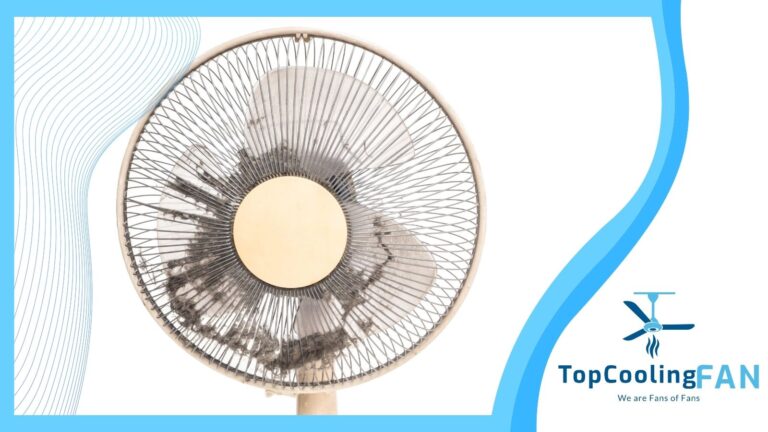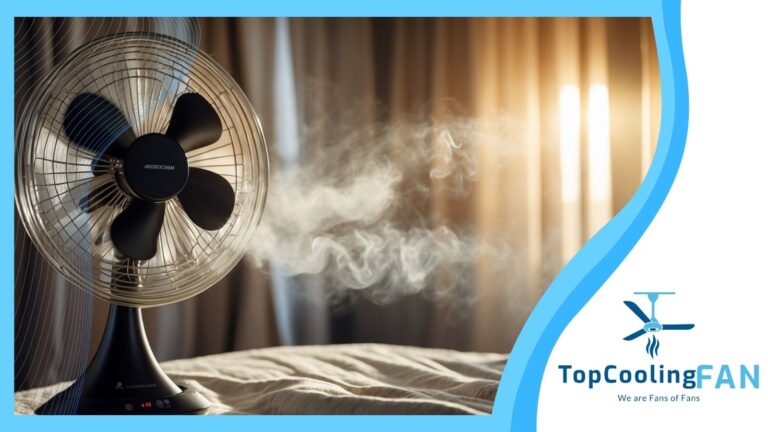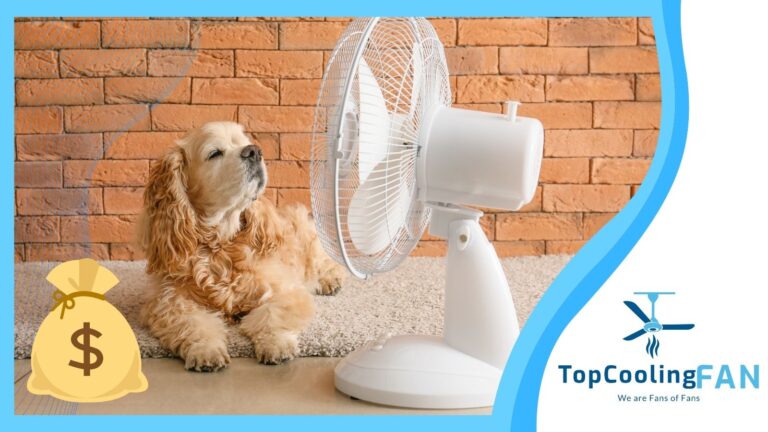Optimal Fan Placement for Room Cooling: A Guide
Maximizing the cooling effect of fans in a room isn’t just about turning them on. It’s about understanding airflow patterns and strategically placing fans to optimize their efficiency.
When a fan is positioned correctly, it can create a breeze that feels naturally cooler, even without a change in room temperature. The key is to encourage the movement of air in a way that it doesn’t simply swirl around but rather circulates throughout the room, contributing to a more comfortable environment during those warm days.

Splitting the text up into at most two sentences per paragraph allows for easier reading.
Knowing the best ways to arrange fans can significantly enhance the comfort of a room. For instance, angling a fan to point upwards towards an adjacent wall can move air more effectively, as the cool air travels along the wall and around the room creating a cooling effect.
Similarly, employing a box fan in a window when the outside temperatures are lower can bring in the fresh, cool air and push out the warm air inside, aiding in efficient ventilation. When two fans are placed across from one another, they can generate a cross-breeze, effectively cooling the area much faster.
Understanding Airflow Basics
The setup of fans in a room greatly impacts the airflow and, consequently, the cooling effect. Strategic fan positioning is vital for enhancing air quality and maintaining an even temperature distribution.
The Science of Air Circulation
Air circulation depends on the movement of air within a space to create a balanced and consistent airflow. Fans facilitate this movement, drawing in cooler air and expelling warmer air, thus leveraging the fact that air moves from areas of higher pressure to lower pressure.
The design and placement of fans can significantly influence the flow pattern, and an optimized arrangement can lead to more efficient cooling.
Temperature and Heat Energy Dynamics
Heat energy naturally moves from warmer to cooler areas and the application of this concept is crucial in cooling a room. Fans do not actually cool air but help in moving warm air away from people and objects, allowing the cooler environment to take its place.
Managing this dynamic effectively is the key to enhancing the cooling effect without relying excessively on air conditioning systems.
Measuring Airflow: CFM and RPM
Airflow is quantified in terms of Cubic Feet per Minute (CFM), which measures the volume of air moved by the fan per minute.
Another important metric is Revolutions Per Minute (RPM), indicating the speed at which the fan blades spin.
High CFM and RPM values typically signify better airflow capacity, yet the fan’s efficiency in circulating air throughout the room also depends on other factors such as its size and blade design.
Essentials of Fan Placement
Optimizing room temperature involves strategic fan placement. Choosing the right type of fan, considering the size of the fan relative to the room, and understanding the balance between intake and exhaust fans are critical steps.
Types of Fans and Their Uses
Different types of fans serve varying purposes when it comes to cooling a room.
A tower fan is ideal for tight spaces due to its slim, vertical design, providing a steady stream of air without taking up much floor space.
Box fans are portable and can be placed in a window to bring in fresh air or exhaust warm air out.
A ceiling fan circulates air throughout a room from above, which can be particularly effective for larger spaces.
For focused airflow, one might consider a pedestal fan which can be adjusted in height and direction.
Wall-mounted fans effectively circulate air in a fixed area and work great in spaces where floor space is limited.
Fan Size and Room Dimension Considerations
The fan size and room size are interconnected. Larger rooms can require more powerful fans or multiple units for adequate airflow.
As a rule of thumb, for a room up to 144 square feet, a 36-inch fan can suffice, while larger rooms up to 225 square feet may need a 42 to 44-inch fan.
Spaces larger than 225 square feet often require a fan that’s 52 inches or greater or multiple medium-sized fans strategically positioned.
The Role of Intake and Exhaust Fans
Creating effective airflow necessitates a balance between intake and exhaust fans.
An intake fan should ideally be placed on the cooler outside wall or window to draw in fresh air, while exhaust fans should be on the opposite side, pushing out stale, warm air.
This push-pull configuration sets up proper ventilation and can be key in both maintaining air quality and reducing the ambient room temperature.
Optimizing Your Room for Airflow
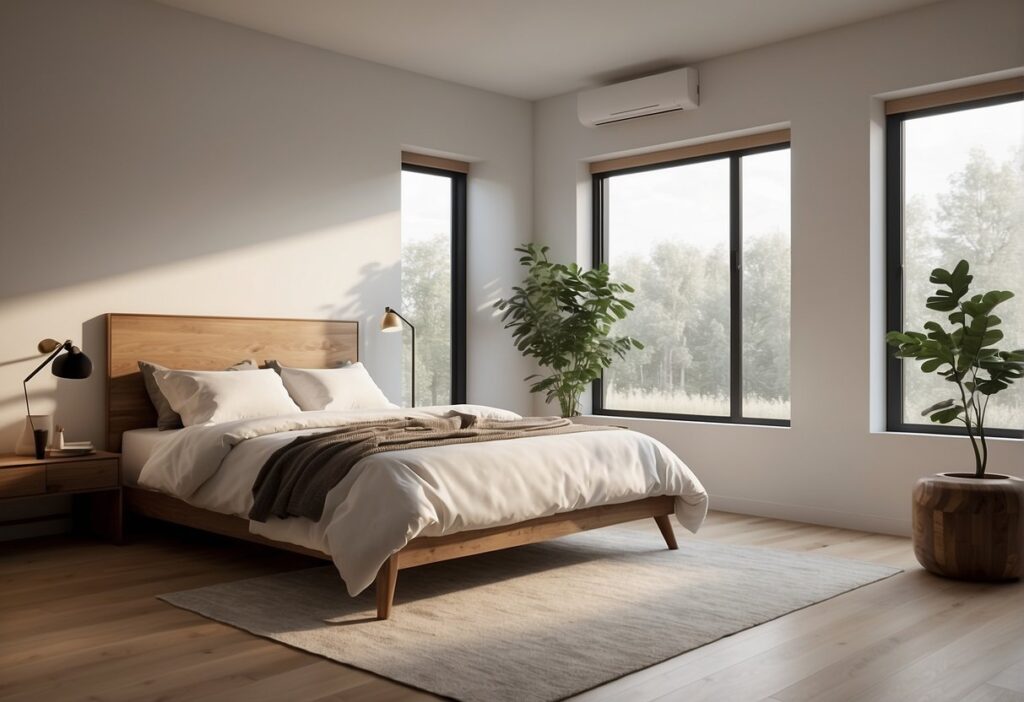
Proper ventilation is crucial for keeping a room comfortable during warm periods. By strategically positioning fans and considering room layout, one can significantly enhance airflow and achieve a cooler environment.
Strategic Positioning of Fans within a Room
Positioning fans correctly is essential for effective airflow. For instance, placing a fan so that it faces the opposite wall from where activity occurs creates a current that circulates cool air effectively.
One strategy includes setting up fans at different heights: a floor fan to move cool air around the base of the room, with another fan higher up to distribute hot air outwards.
Dealing with Obstacles and Furniture
Obstacles such as furniture can impede airflow in a room. It’s important to ensure that the path of airflow is clear.
For instance, avoid placing a large couch directly in front of a fan. A clear path allows for more efficient circulation of air, which is key for reducing heat.
Key considerations:
- Remove or reposition large pieces of furniture that block airflow.
- Keep doorways clear to allow air to move freely throughout the space.
Balancing Air Pressure: Positive vs. Negative
Balancing air pressure is critical in optimizing airflow.
Positive pressure occurs when more air is pushed into a room than is exhausted, preventing unwanted dust from entering.
Conversely, negative pressure expels stale air effectively but may draw in dust from outside. Both have implications for air quality and temperature control.
To maintain balance:
- Use fans to create a gentle push of air into the room (positive pressure).
- Ensure exhaust fans or openings are available for air to leave (negative pressure).
Cooling Strategies for Different Spaces

In the quest to cool a room effectively, one must consider the specific setup of the space and the types of fans available. The right strategy can significantly enhance room comfort and energy efficiency.
Single vs. Multiple Fans
When cooling a single space, a singular, powerful fan can often suffice, particularly if it’s centrally located to provide an even airflow throughout the room.
However, in larger rooms or for more comprehensive cooling, multiple fans may be necessary. They work in tandem to circulate air, with one fan pushing cool air in and another expelling warm air out, creating a cross-breeze that can substantially lower the temperature.
Floor, Tabletop, and Ceiling Configurations
Floor fans, such as pedestal or tower fans, are effective at moving air at a lower level and can be angled to direct the breeze where it is most needed.
Tabletop fans are great for personal cooling or small spaces.
Ceiling fans, on the other hand, offer a top-down airflow that covers a large area, making them ideal for evenly distributing air in a room — aim for 10 CFM for every square foot of the room for optimal efficiency.
Special Considerations for Enclosed and Open Areas
In enclosed areas, it’s important to ensure that fans do not simply move hot air around.
Positioning a fan to circulate air from a cooler area, like a shaded part of the house, towards the warm section can help lower the temperature.
For open areas, consider the placement of multiple fans to facilitate a streamline airflow pattern throughout the space.
Box fans placed in windows can be especially effective in the evenings when the temperature outside drops, pulling in cool air and pushing out the hot air.
Fan Operation and Maintenance for Better Performance

Proper maintenance and regular cleaning are essential for ensuring that fans operate efficiently and contribute effectively to the cooling performance of a room. They need to consider appropriate fan speed and direction for optimal airflow as well as timely inspection and part replacement.
Cleaning and Dust Management
Diligent cleaning and dust management are vital in maintaining a fan’s effectiveness.
Over time, fan blades and vents accumulate dust, which hampers airflow and cooling performance.
They should clean off any visible dust with a soft cloth or use compressed air cans for hard-to-reach areas.
- Unplug the fan before cleaning
- Use a soft brush attachment on a vacuum cleaner for initial dust removal
- For thorough cleaning, dismantle the fan according to the manufacturer’s instructions
Maintaining Optimal Fan Speed and Direction
Adjusting the fan speed and ensuring the correct direction of airflow are crucial steps in optimizing a fan’s cooling capabilities.
They should set ceiling fans to rotate counterclockwise during summer to push cool air down. For room fans, they can use the adjustable speed settings to suit their cooling needs without overworking the fan’s motor.
Splitting the text up into at most two sentences per paragraph allows for easier reading.
Regular Inspection and Replacement
Periodic inspection of fans helps identify issues that could affect functionality and cooling.
They must look for signs of wear, unusual noises, or wobbles. These can all indicate it’s time for repairs or replacement of parts.
Replacing outdated or malfunctioning fans is sometimes more cost-effective than repair.
- Check fans every 6 months for maintenance needs
- Replace any faulty parts or the entire fan if repairs are not feasible
Enhancing Cooling with Additional Measures

Positioning fans strategically can significantly improve a room’s comfort during hot weather. But for those who aim to maximize cooling, it’s essential to incorporate additional measures.
These methods not only bolster the effects of good fan placement but are also critical for reducing heat gain and maintaining cooler indoor temperatures.
Utilizing Windows, Doors, and Curtains
Keeping windows, doors, and curtains managed effectively can lead to a cooler environment.
For instance, opening windows opposed across a room creates a cross-breeze that ushers in the fresh air.
Conversely, when the sun is at its peak, closing windows and drawing curtains can prevent heat gain.
Ensuring that air flows freely through a doorway can also enhance a fan’s ability to circulate air. Meanwhile, doors can be strategically opened or closed to direct airflow within a home.
Combining Fans with Air Conditioning
To achieve optimal cooling, fans should be used in conjunction with an air conditioner.
Positioning a fan close to the air conditioning unit can spread cool air more evenly.
They recommend placing a downdraft fan near the AC to enhance the distribution of cooled air.
This tandem effort helps in reducing the temperature quicker and can also result in energy savings. The air conditioner may not need to work as hard to cool the room.
Cooling Tips for Dry Climates and Nighttime
In dry climates, evaporative coolers can be particularly effective. And when combined with fans, the cooling effect is amplified.
For those cool outside nights, positioning a fan at a window to draw in the night air can significantly reduce indoor temperatures.
It’s crucial to optimize the location of fans during nighttime to take advantage of the natural drop in temperature.
Employing fans to create a draft can expel warm air and pull in cooler night air, creating a more comfortable environment for sleep.
Selecting the Right Fan for Your Needs
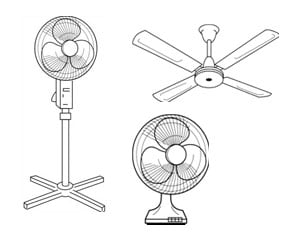
Selecting the right fan requires attention to the types available, their specifications, and the balance between cost and efficiency.
Analyzing Types and Features of Fans
Various types of fans cater to different needs.
Ceiling fans effectively circulate air in a room and often come with lighting fixtures, while tower fans are tall, slim, and ideal for tight spaces.
Tabletop fans are compact and suitable for personal cooling. For larger spaces, a floor fan or a pedestal fan may prove to be more effective due to their size and power.
Features also vary greatly among fans. Some include remote controls, multiple speed settings, adjustable heights, and oscillation capabilities.
An energy-efficient model not only provides cooling but also cuts down on electricity usage, delivering long-term savings.
Understanding Fan Specifications
When evaluating a fan’s suitability, one must consider the following specifications:
- CFM (Cubic Feet per Minute): This measures the volume of air a fan can move per minute and is a key indicator of its power.
- Noise Level: Measured in decibels, lower numbers mean quieter operation.
- Size: The physical dimensions determine the space needed for the fan and its potential placement.
An energy-efficient cooling fan should have a high CFM to noise level ratio, providing maximum airflow with minimal disturbance.
Finding Value: Efficiency vs. Cost
The value of a fan can be assessed by comparing its efficiency and overall cost.
Fans with Energy Star ratings often suggest better efficiency. They may cost more upfront but typically result in lower energy bills.
A table fan is generally more affordable than a ceiling fan. However, it may not suffice for cooling larger areas.
When purchasing a fan, people should consider not just the price tag but also the long-term operational costs.
The right type of fan will offer an optimal balance between performance and expense, ensuring one receives effective cooling without overspending.

